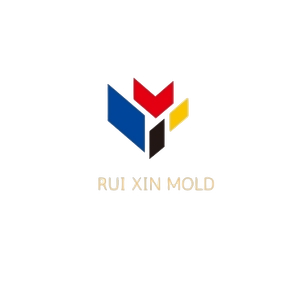Catalog
Tags
What is Custom Injection Molding? The Ultimate Manufacturing Solution
In today’s manufacturing landscape, custom injection molding stands as one of the most versatile and efficient processes for producing plastic parts. From medical devices to automotive components, this technology enables businesses to create high-quality, precise plastic parts at scale.
But what exactly is custom injection molding? How does it work, and why has it become the go-to solution for so many industries? This comprehensive guide will walk you through everything you need to know about this transformative manufacturing process, its benefits, applications, and how it can give your business a competitive edge.
Table of Contents
- Understanding Custom Injection Molding
- How Injection Molding Works: The Step-by-Step Process
- 7 Common Types of Injection Molding Processes
- Materials Used in Custom Injection Molding
- Key Design Considerations for Injection Molded Parts
- Top Benefits of Custom Injection Molding
- Common Applications Across Industries
- Understanding the Cost Factors
- How to Choose the Right Injection Molding Manufacturer
- Future Trends in Injection Molding Technology
Understanding Custom Injection Molding
Custom injection molding is a manufacturing process that involves injecting molten material into a mold to produce plastic parts in high volumes. Unlike standard injection molding, the “custom” aspect refers to parts specifically designed to meet unique specifications, geometries, and functional requirements.
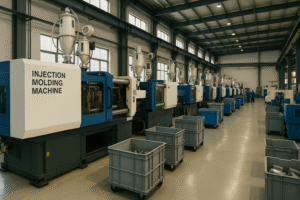
The process begins with creating a custom mold (or tool) that precisely matches the desired part design. This mold is then installed in an injection molding machine where plastic pellets are melted and injected under high pressure into the mold cavity.
What makes custom injection molding particularly valuable is its ability to produce identical parts with exceptional precision and repeatability. Once the mold is created, thousands or even millions of identical parts can be manufactured with minimal variation.
According to Grand View Research, the global plastic injection molding market size was valued at $284.5 billion in 2022 and is expected to grow at a compound annual growth rate (CAGR) of 4.7% from 2023 to 2030.
Custom injection molding differs from other manufacturing processes like 3D printing or CNC machining in several key ways. While 3D printing excels at prototyping and low-volume production, injection molding becomes more cost-effective at higher volumes due to economies of scale.
How Injection Molding Works: The Step-by-Step Process
The custom injection molding process follows a precise sequence that ensures consistent, high-quality results. Understanding this workflow helps in designing better parts and troubleshooting potential issues.
1. Mold Design and Creation: The process begins with designing the mold based on the part specifications. This involves CAD modeling, simulation, and precision machining of the mold components.
2. Material Preparation: Plastic pellets of the chosen material are dried (if necessary) and loaded into the injection molding machine’s hopper.
3. Melting Phase: The pellets are fed into a heated barrel where they melt into a viscous liquid. A reciprocating screw helps mix and homogenize the molten plastic.
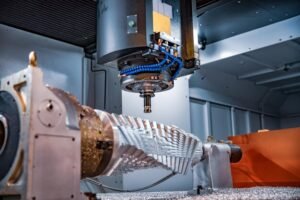
4. Injection: The molten plastic is injected under high pressure into the mold cavity through a nozzle and runner system.
5. Cooling: The plastic cools and solidifies in the mold, taking the shape of the cavity. Cooling time depends on part thickness and material properties.
6. Ejection: Once sufficiently cooled, the mold opens and ejector pins push the finished part out of the mold.
7. Post-Processing: Some parts may require additional steps like trimming excess material (flash), surface finishing, or assembly with other components.
The entire cycle time can range from a few seconds to several minutes depending on part complexity and size. Modern injection molding machines can automate this process for continuous production.
7 Common Types of Injection Molding Processes
While the basic principle remains the same, several specialized injection molding techniques have been developed to meet specific manufacturing needs:
1. Thermoplastic Injection Molding: The most common type, using thermoplastic materials that can be melted and reshaped multiple times.
2. Insert Molding: Involves placing metal or other material inserts into the mold before injection, creating composite parts in a single operation.
3. Overmolding: A two-step process where a second material is molded over an existing part to create multi-material components.
4. Micro Injection Molding: Specialized for producing extremely small, precise parts often used in medical devices and electronics.
5. Gas-Assisted Injection Molding: Uses inert gas to create hollow sections within thick parts, reducing weight and material usage while maintaining strength.
6. Structural Foam Molding: Introduces a foaming agent to create parts with a solid skin and cellular core, ideal for large parts requiring high strength-to-weight ratios.
7. Liquid Silicone Rubber (LSR) Molding: Used for producing flexible, durable parts from silicone rubber, common in medical and food-grade applications.
Each of these variations offers unique advantages for specific applications. For example, our guide on Overmolding vs. Insert Molding explores the differences between these two popular techniques in greater detail.
Materials Used in Custom Injection Molding
The choice of material significantly impacts the properties, performance, and cost of injection molded parts. Hundreds of plastic materials are available, each with unique characteristics.
Common Thermoplastics:
- ABS (Acrylonitrile Butadiene Styrene): Good impact resistance, commonly used for consumer products and automotive parts.
- Polypropylene (PP): Chemical resistant and flexible, used for containers, medical devices, and living hinges.
- Polycarbonate (PC): High impact strength and transparency, used for safety glasses, medical devices, and electronics.
Engineering Plastics:
- Nylon (Polyamide): Excellent wear resistance and strength, used for gears and mechanical parts.
- POM (Acetal/Delrin): Low friction and high stiffness, ideal for precision mechanical components.
- PEEK (Polyether Ether Ketone): High-performance thermoplastic with exceptional thermal and chemical resistance.
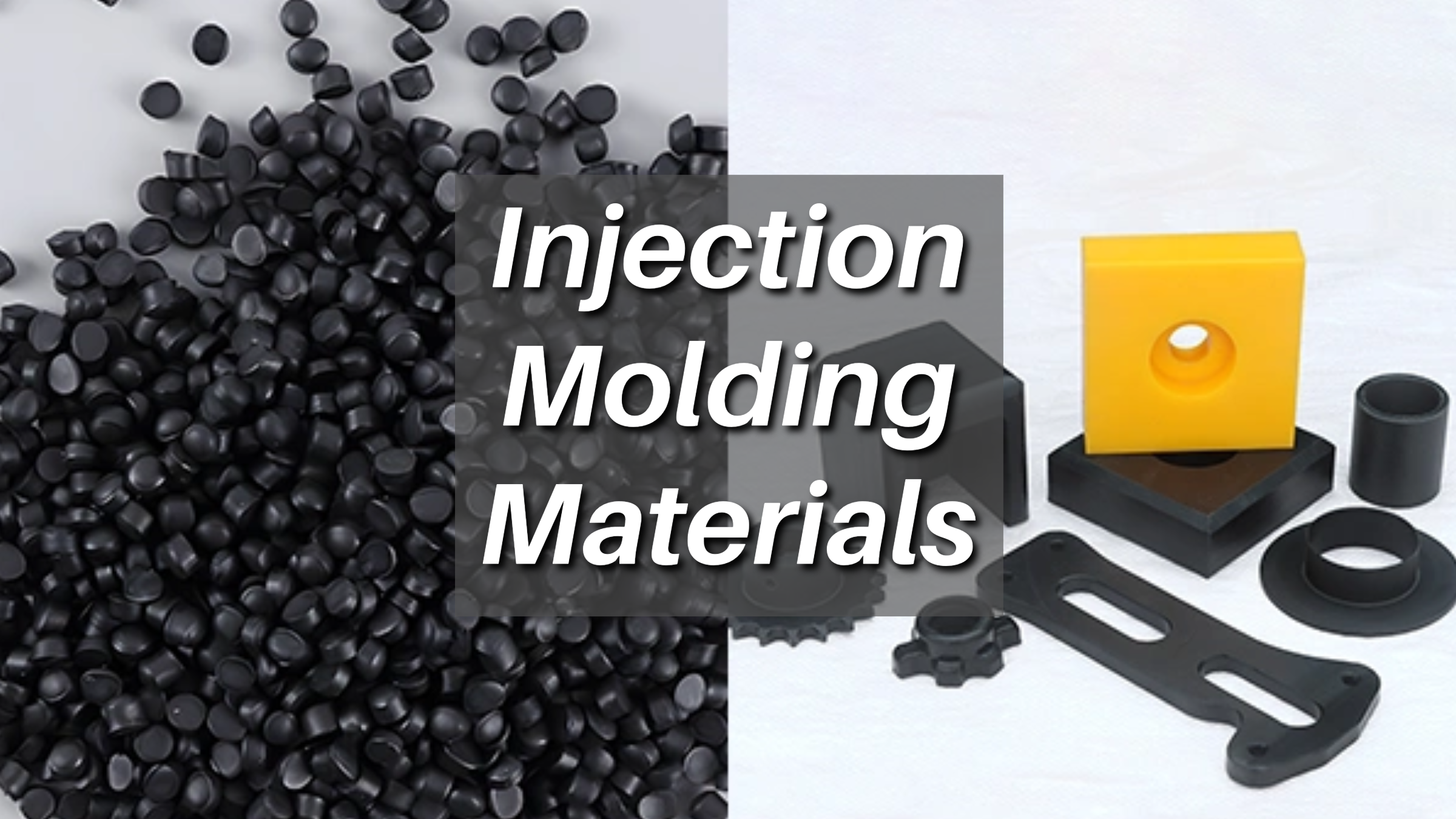
Specialty Materials:
- TPE/TPU (Thermoplastic Elastomers): Rubber-like flexibility with thermoplastic processability.
- Biodegradable Plastics: PLA and other eco-friendly alternatives gaining popularity.
- Conductive Plastics: Embedded with conductive fillers for EMI shielding applications.
Material selection depends on factors like mechanical requirements, environmental conditions, regulatory compliance, and cost constraints. The UL Prospector database provides comprehensive data on thousands of plastic materials to help with selection.
Key Design Considerations for Injection Molded Parts
Designing parts for injection molding requires special considerations to ensure manufacturability, functionality, and cost-effectiveness. Here are critical factors to address:
1. Wall Thickness: Maintain uniform wall thickness (typically 1-4mm) to prevent sink marks and warpage. Sudden thickness changes can cause defects.
2. Draft Angles: Include 1-2° draft angles on vertical walls to facilitate part ejection from the mold.
3. Rib Design: Use ribs (typically 40-60% of adjacent wall thickness) to add stiffness without increasing overall wall thickness.
4. Gate Location: The point where molten plastic enters the mold affects part quality. Gate marks may need to be hidden in non-critical areas.

5. Undercuts: Avoid undercuts when possible as they complicate mold design. When necessary, use side actions or lifters in the mold.
6. Surface Finish: Specify appropriate surface textures (SPI standards) based on aesthetic and functional requirements.
7. Tolerances: Set realistic tolerances based on material properties and part geometry. Tighter tolerances increase cost.
Following Design for Manufacturing (DFM) principles from the start can significantly reduce production issues and costs. Many manufacturers offer free DFM analysis to help optimize designs before tooling begins.
Top Benefits of Custom Injection Molding
Custom injection molding offers numerous advantages that make it the preferred choice for mass production of plastic parts across industries:
1. High Efficiency: Once the mold is created, parts can be produced rapidly with cycle times often measured in seconds.
2. Excellent Repeatability: Produces thousands or millions of virtually identical parts with minimal variation.
3. Material Versatility: Can process hundreds of different plastic materials with varying properties.
4. Complex Geometries: Capable of producing intricate shapes that would be difficult or impossible with other methods.
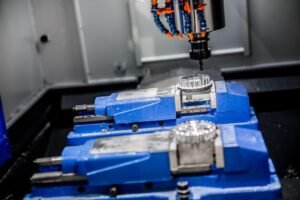
5. Reduced Waste: Excess material (sprue and runners) can often be reground and reused.
6. Low Labor Costs: Highly automated process requiring minimal operator intervention once running.
7. Superior Surface Finish: Produces parts with excellent surface quality right out of the mold.
8. Insert Capability: Allows integration of metal inserts, threads, and other components during molding.
9. Scalability: Easily scales from prototype quantities to mass production with the same tooling.
10. Cost-Effective: Although initial tooling costs are high, per-part costs become very low at volume.
According to a MarketsandMarkets report, the efficiency and cost advantages of injection molding are driving its adoption across multiple industries, particularly automotive and healthcare.
Common Applications Across Industries
Custom injection molding serves virtually every industry that uses plastic components. Here are some prominent applications:
Automotive:
- Interior components (dashboards, knobs, panels)
- Under-hood parts (fluid reservoirs, connectors)
- Exterior components (light housings, grilles)
Medical:
- Surgical instruments
- Diagnostic device housings
- Disposable medical components
Consumer Electronics:
- Device housings and cases
- Buttons and controls
- Connectors and cable management
Packaging:
- Bottle caps and closures
- Cosmetic containers
- Food storage containers
Industrial:
- Gears and bearings
- Electrical enclosures
- Material handling components
The versatility of injection molding allows it to produce parts ranging from tiny medical components weighing less than a gram to large automotive panels several feet across. Our case study on automotive injection molding applications showcases some innovative uses in vehicle manufacturing.
Understanding the Cost Factors
The cost of custom injection molded parts depends on several variables. Understanding these factors helps in budgeting and making cost-effective decisions:
1. Mold/Tooling Costs: Typically the largest upfront expense, ranging from a few thousand dollars for simple molds to $100,000+ for complex, multi-cavity molds.
2. Part Design Complexity: More complex geometries require more sophisticated (and expensive) molds with side actions, lifters, or other features.
3. Material Selection: Commodity plastics like PP or ABS are most economical, while engineering-grade and specialty materials cost more.
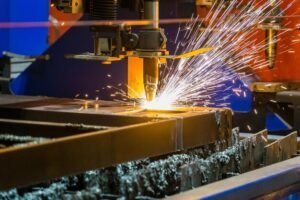
4. Production Volume: Higher volumes spread tooling costs over more parts, reducing per-unit cost.
5. Tolerance Requirements: Tighter tolerances require more precise (and costly) tooling and process control.
6. Surface Finish: Special textures or polished finishes add to mold costs.
7. Secondary Operations: Additional steps like assembly, decoration, or special packaging increase costs.
8. Geographic Location: Manufacturing costs vary by region due to labor rates, overhead, and local market conditions.
As a general rule, injection molding becomes cost-competitive with other manufacturing methods at volumes above 1,000-5,000 parts. For lower quantities, alternatives like 3D printing or CNC machining may be more economical.
How to Choose the Right Injection Molding Manufacturer
Selecting the right injection molding partner is crucial for project success. Consider these factors when evaluating manufacturers:
1. Experience and Expertise: Look for experience with similar parts and materials in your industry.
2. Equipment Capabilities: Ensure they have appropriately sized machines for your parts (clamp force, shot size).
3. Quality Systems: Certifications like ISO 9001, IATF 16949 (automotive), or ISO 13485 (medical) indicate robust quality systems.
4. Design Support: Strong DFM capabilities can save significant costs by optimizing designs for manufacturability.
5. Tooling Capabilities: Some manufacturers handle mold making in-house, while others outsource – each approach has pros and cons.
6. Secondary Services: Value-added services like assembly, decoration, or packaging can streamline your supply chain.
7. Location: Local manufacturers offer easier communication and faster turnaround, while overseas options may offer lower costs.
8. References and Reputation: Check customer testimonials and ask for references from similar projects.
9. Financial Stability: Ensure the company is financially sound to support long-term production needs.
10. Communication: Responsive, clear communication is essential for resolving issues quickly.
The Plastics Technology directory can help identify qualified injection molding suppliers by capability and location.
Future Trends in Injection Molding Technology
The injection molding industry continues to evolve with new technologies and approaches that enhance capabilities and efficiency:
1. Industry 4.0 Integration: Smart factories with IoT-connected machines enable real-time monitoring, predictive maintenance, and data-driven optimization.
2. Sustainable Materials: Growing use of bioplastics, recycled materials, and more efficient processes to reduce environmental impact.
3. Micro Molding Advancements: Improved capabilities for extremely small, high-precision medical and electronic components.
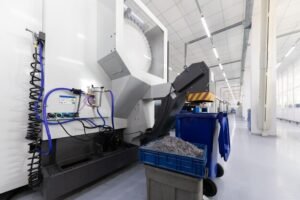
4. Multi-Material Molding: More sophisticated machines capable of combining different materials or colors in single cycles.
5. Additive Manufacturing for Tooling: 3D printed molds for prototyping and short runs reduce lead times and costs.
6. AI and Machine Learning: Advanced algorithms optimizing process parameters and detecting defects automatically.
7. Energy-Efficient Machines: New hydraulic and all-electric machines reducing energy consumption by 40-80%.
8. In-Mold Electronics: Integration of circuits and sensors directly into molded parts for smart devices.
These innovations are making injection molding more precise, efficient, and sustainable than ever before. Companies that adopt these advanced technologies gain competitive advantages in quality, speed, and cost.
For more insights into emerging manufacturing technologies, check out our article on The Future of Plastic Manufacturing.
Frequently Asked Questions About Custom Injection Molding
Q: How long does it take to create a custom injection mold?
A: Mold lead times typically range from 4-12 weeks depending on complexity. Simple molds might be completed in 2-3 weeks, while large, complex tools with multiple cavities can take 3-6 months. Factors affecting lead time include mold size, complexity, surface finish requirements, and the mold maker’s current workload.
Q: What’s the minimum order quantity for custom injection molding?
A: While there’s no universal minimum, most manufacturers prefer production runs of at least 1,000-5,000 parts to justify mold setup costs. However, some offer low-volume injection molding services for quantities as small as 100-500 parts using prototype tooling or shared molds. The economics improve significantly at higher volumes.
Q: How do I reduce costs for my injection molding project?
A: Several strategies can lower costs: 1) Optimize part design for manufacturability (uniform wall thickness, adequate draft), 2) Consider less expensive materials where possible, 3) Relax non-critical tolerances, 4) Use standard finishes instead of custom textures, 5) Increase order quantities to spread tooling costs, and 6) Work with manufacturers early for DFM feedback.
Q: Can injection molding be used for metal parts?
A: While traditional injection molding is for plastics, Metal Injection Molding (MIM) is a similar process for small, complex metal parts. MIM mixes metal powder with a binder, molds the mixture, then removes the binder and sinters the part. For larger metal parts, die casting is more common. Plastic injection molding can also incorporate metal inserts during molding.
Q: What’s the difference between prototype and production molds?
A: Prototype molds are simpler and less expensive, often made from aluminum or mild steel, designed for low-volume production (typically 100-10,000 parts). Production molds use hardened steel, more robust construction, and often multiple cavities to withstand high-volume production (millions of cycles). Production molds cost more but offer better longevity and part consistency.
Conclusion: The Power of Custom Injection Molding
Custom injection molding remains one of the most versatile and cost-effective manufacturing processes for producing high-quality plastic parts at scale. From its ability to create complex geometries to its unmatched efficiency in mass production, injection molding offers benefits that few other processes can match.
As we’ve explored, success with injection molding depends on thoughtful design, material selection, and choosing the right manufacturing partner. With advancements in materials, Industry 4.0 technologies, and sustainable practices, injection molding continues to evolve to meet tomorrow’s manufacturing challenges.
Whether you’re developing a new product or optimizing an existing component, understanding the principles of custom injection molding will help you make informed decisions that balance quality, performance, and cost.
For more insights into manufacturing processes, check out our related articles on Plastic Manufacturing Methods Compared and Designing Products for Manufacturability.
Need Precision CNC Machining for Your Mold Components?
We specialize in custom CNC machining of mold inserts, slide cores, ejector plates, mold bases, and lifters
all made to your exact drawings and specifications.
👉 Let’s Build Your Next Project Together!
Tell us your needs and upload your drawings — we’ll get back within 24 hours.
